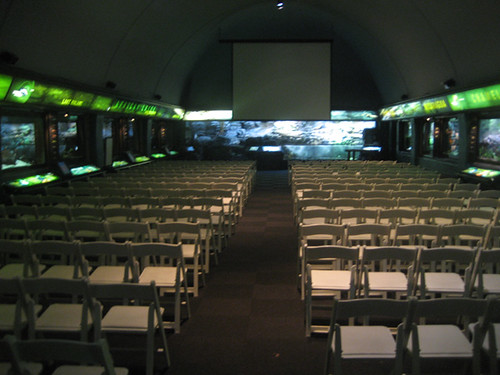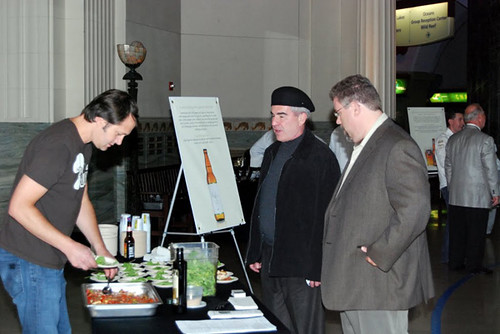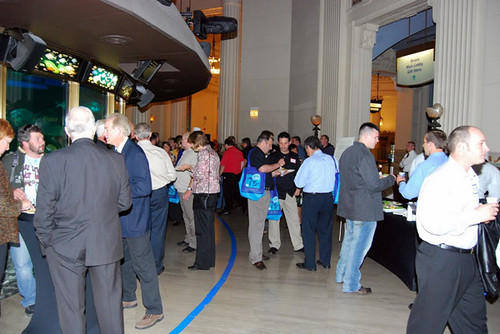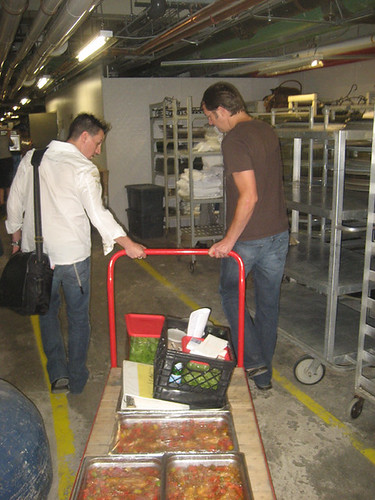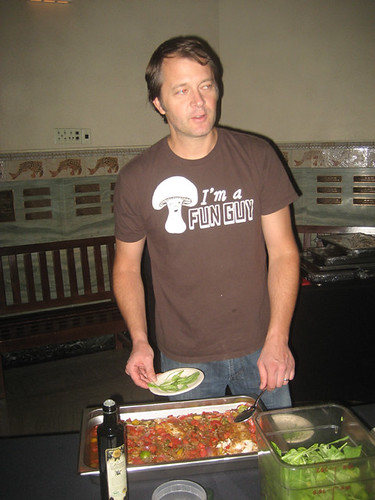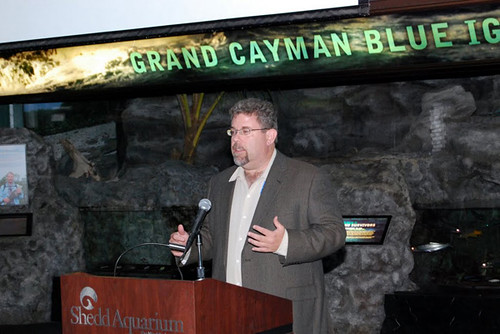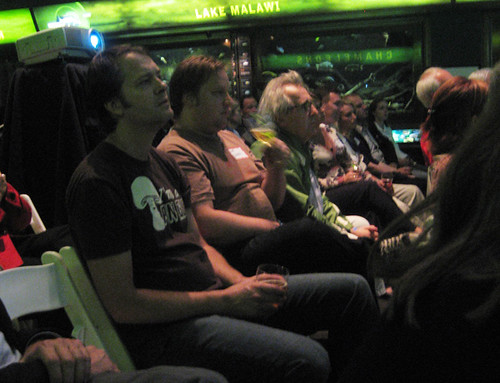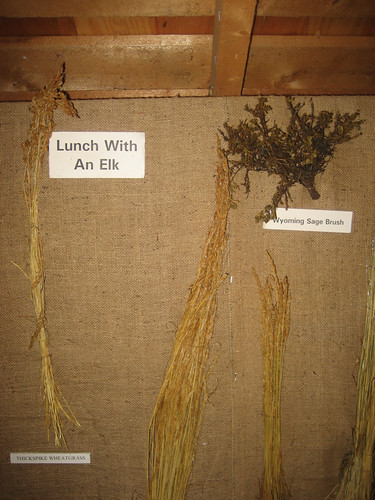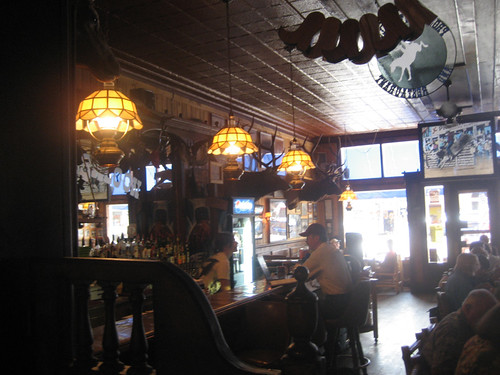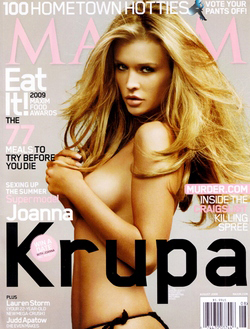The closing of Gourmet has led to a number of articles noting the irony that the healthiest food magazine out there is the one that was bought by Gourmet’s owner two decades ago, promptly killed in part to help protect Gourmet, and then resurrected on a business model 180 degrees from Gourmet’s: Cook’s Illustrated. If Gourmet was the New Yorker of food, Cook’s Illustrated has long been the Chilton’s— a no-gloss how to guide low on romance, high on practicality. Their editorial approaches were manifestly opposite, but more significantly now, so were their business models: Gourmet existed to sell glossy ads to food companies wanting to reach old money, Cook’s Illustrated sells subscriptions directly to people who want solid information and will fork over their own money for it.
So you might expect Christopher Kimball, editor-publisher of CI, to make that point when asked why his magazine flourishes in the face of Gourmet’s demise. You might expect pretty much his whole life to be built on that difference, in fact. But you would be wrong. Kimball’s response, in a NY Times op-ed, basically is… “Gourmet would have gotten away with it if it weren’t for you pesky bloggers!” Not only did free writing on the internet hurt paid writing at Gourmet (that much seems true at least to a certain point), but in the process, Kimball claims, it killed a culture of quality food writing, only to replace it with democratized dumbth (as Steve Allen called it when he would rant about how pop culture had sunk since his day of… bringing Mexican dialect comedians to America).
This is an odd argument for Kimball of all people to be making, since his magazine is built on the assumption that you can democratize any dish by finding the optimum way to prepare it. But it gets even odder with an account of the history of food publishing that contradicts and refutes itself as he goes:
The precursor to Gourmet, and the first truly successful American food publication, was founded in the 1890s and titled The Boston Cooking School Magazine of Culinary Science and Domestic Economics. It eventually changed its name to American Cookery and then died in 1947, forced under, in part, by the founding of Gourmet… It was the end of domestic science and food economy and the beginning of the era of the gourmet
The end of domestic science… except for the literally thousands of practical recipes that continue to be published not only in the major women’s magazines that existed then (McCalls, Better Homes and Gardens, etc.) and have come into existence since (Martha Stewart, O, etc.) but in the many cooking magazines that have sprung up, everything from Cooking Light to Rachael Ray magazine. That is a home ec iceberg that has always been larger than the gourmet tip, if largely unnoticed by the food elite. But keep in mind that exaggerated report of a death when considering the other death Kimball is here to announce.
Next, he poses a scary question:
Now, 68 years after its founding, Gourmet has followed American Cookery… Is American magazine publishing on the verge of being devoured by the democratic economics of the Internet?
but then immediately demonstrates that it’s based on a false premise. He admires the vanished charms of an old school billionaire, Conde Nast’s S.I. Newhouse:
He poured his fortune into his magazine properties and his editors, even when the prospect of return seemed dim. His was a world of philanthropic publishing.
So did Gourmet never actually make money, even in the boom times recently ended? Was it basically The New Republic of food, a moneyloser supported by a rich guy in search of influence? That seems hard to credit, but it does suggest that its high-flying ways were especially vulnerable to any downturn. I’ve read that pages in Gourmet went for a base rate of $90,000, where Bon Appetit, which actually had a larger (if far less elite) subscriber base, charges about a third of that. Is it really any wonder that such a magazine would prove too rich for any advertiser’s blood in any economic downturn? (And will you really be surprised if, having cut Gourmet’s enormous overhead by shutting it down and clearing it out, Conde Nast revives the brand in a much more cost-effective guise?) It wouldn’t take bloggers to kill a magazine under circumstances like that.
The shuttering of Gourmet reminds us that in a click-or-die advertising marketplace, one ruled by a million instant pundits, where an anonymous Twitter comment might be seen to pack more resonance and useful content than an article that reflects a lifetime of experience, experts are not created from the top down but from the bottom up. They can no longer be coronated; their voices have to be deemed essential to the lives of their customers. That leaves, I think, little room for the thoughtful, considered editorial with which Gourmet delighted its readers for almost seven decades.
I find this too incoherent to entirely follow (and it goes on for another couple of grafs, without getting clearer) but to the extent I see arguments here, they seem mostly backwards. Articles in magazines may be written by experts, but they’re more often written by freelancers who’ve interviewed experts on the phone, and often in the process simplify and dumb down and just plain screw the expert’s insights up; the internet has brought us the voices of ten million non-experts, it’s true, but one thing it’s also done is cut out that middleman freelancer and given experts a way to talk to us directly. At the same time, by removing another mediator— the editor— the vast variety available online gives us the ability to find for ourselves the voice we trust most on a subject.
Okay, so at its best, Reichl finding and editing Laurie Colwin, say, you have that vaunted magazine experience of the editor shaping the reader’s experience. But 95% of magazine writing isn’t about that, it’s about 5 Hot Tips for the subject of the minute that every other magazine is about this minute. In a bulletpointed, tip-driven freelance market, the reason so many writers blog is because it is their chance to write the thoughtful, considered piece, and not just 7 Great Cheeses To Pair With Giving Him the Best Sex He’s Ever Had.
But Kimball’s committed to the cult of the expert and the editors who love them, so he ends it with an analogy that he thinks closes the sale, but actually sends him down in flames:
Julia Child, one of my Boston neighbors, epitomized this old-school notion of apprenticeship… Her first question upon meeting a young chef was always, “And where did you train, dear?”
That’s right, Julia Child, who wanted us all to cook French at home, is trotted out as the advocate of only eating from certified chefs. If anyone stood for the idea that self-education was possible, it was Child— true, she might have expected expertise in a high-priced restaurant, we all would, but it was an expertise that she herself did not really have (yes, she attended Cordon Bleu, but a housewife going to cooking classes hardly constituted an “old-school notion of apprenticeship” in the feudal kitchens of 1950s France) and plainly did not consider it essential to the act of writing about food. Child may not have thought much of the best-known blog specifically about her, but I very much doubt that if she were alive now, she would so presumptively dismiss, as Kimball does, the explosion of interest in and, yes, expertise shown about food on the internet today.


 Posted in
Posted in 
